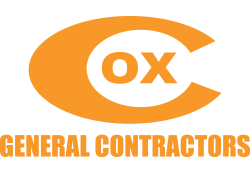Construction planning is a fundamental and challenging activity in the management and execution of construction projects. It involves the choice of technology, the definition of work tasks, the estimation of the required resources and durations for individual tasks, and the identification of any interactions among the different work tasks. A good construction plan is the basis for developing the budget and the schedule for work. Developing the construction plan is a critical task in the management of construction, even if the plan is not written or otherwise formally recorded. In addition to these technical aspects of construction planning, it may also be necessary to make organizational decisions about the relationships between project participants and even which organizations to include in a project. For example, the extent to which sub-contractors will be used on a project is often determined during construction planning.
Forming a construction plan is a highly challenging task. As Sherlock Holmes noted:
Most people, if you describe a train of events to them, will tell you what the result would be. They can put those events together in their minds, and argue from them that something will come to pass. There are few people, however, who, if you told them a result, would be able to evolve from their own inner consciousness what the steps were which led up to that result. This power is what I mean when I talk of reasoning backward. [1]
Like a detective, a planner begins with a result (i.e. a facility design) and must synthesize the steps required to yield this result. Essential aspects of construction planning include the generation of required activities, analysis of the implications of these activities, and choice among the various alternative means of performing activities. In contrast to a detective discovering a single train of events, however, construction planners also face the normative problem of choosing the best among numerous alternative plans. Moreover, a detective is faced with an observable result, whereas a planner must imagine the final facility as described in the plans and specifications.
In developing a construction plan, it is common to adopt a primary emphasis on either cost control or on schedule control. Some projects are primarily divided into expense categories with associated costs. In these cases, construction planning is cost or expense oriented. Within the categories of expenditure, a distinction is made between costs incurred directly in the performance of an activity and indirectly for the accomplishment of the project. For example, borrowing expenses for project financing and overhead items are commonly treated as indirect costs. For other projects, scheduling of work activities over time is critical and is emphasized in the planning process. In this case, the planner insures that the proper precedences among activities are maintained and that efficient scheduling of the available resources prevails. Traditional scheduling procedures emphasize the maintenance of task precedences (resulting in critical path scheduling procedures) or efficient use of resources over time (resulting in job shop scheduling procedures). Finally, most complex projects require consideration of both cost and scheduling over time, so that planning, monitoring and record keeping must consider both dimensions. In these cases, the integration of schedule and budget information is a major concern.
